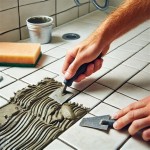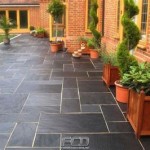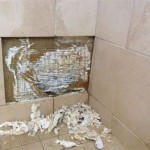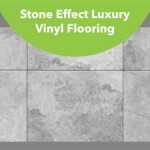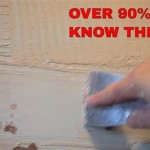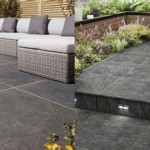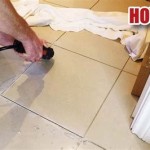Can You Put Tile On Drywall Above Shower?
The question of whether tile can be installed directly onto drywall above a shower is a frequent point of debate among homeowners and construction professionals alike. While technically possible in some limited situations, the practice is generally discouraged due to the inherent properties of drywall and the specific demands of a shower environment. A thorough understanding of the materials involved, potential risks, and recommended alternatives is essential for a successful and long-lasting tiling project.
Drywall, also known as gypsum board or wallboard, is a common building material composed of a gypsum core sandwiched between two layers of paper. It is primarily intended for interior walls and ceilings in areas with relatively low moisture levels. Its porous nature makes it susceptible to water damage, which can lead to softening, crumbling, and mold growth. Tiling, conversely, is typically employed in areas prone to moisture exposure, such as bathrooms and kitchens, where it serves as a protective barrier against water penetration.
The combination of these two materials in a shower environment presents a significant challenge. The grout lines between tiles, while intended to be water-resistant, are not entirely waterproof. Over time, water can seep through these grout lines and come into contact with the drywall substrate. This prolonged exposure can compromise the structural integrity of the drywall, leading to tile delamination and costly repairs. Therefore, careful consideration must be given to the suitability of drywall as a tile substrate above a shower.
Understanding the Risks of Tiling Directly on Drywall Above a Shower
The potential for moisture penetration is the primary concern when considering tiling directly onto drywall above a shower. Even with meticulous grouting and sealing, minute cracks and imperfections can develop over time, allowing water to infiltrate the substrate. This can lead to a cascade of problems, including:
Drywall Degradation: Continuous exposure to moisture will cause the gypsum core of the drywall to weaken and crumble. This loss of structural integrity can result in the tiles becoming loose and falling off the wall.
Mold and Mildew Growth: The damp environment behind the tiles provides an ideal breeding ground for mold and mildew. These organisms can not only damage the drywall but also pose health risks to occupants, particularly those with allergies or respiratory sensitivities.
Tile Delamination: As the drywall deteriorates, the bond between the tile adhesive and the substrate weakens. This can lead to tiles detaching from the wall, creating a safety hazard and requiring extensive repairs.
Structural Damage: In severe cases, prolonged water damage can extend beyond the drywall and affect the underlying framing of the wall. This can lead to more significant structural problems that require professional intervention.
While standard drywall is not recommended, moisture-resistant drywall, often referred to as "green board," is sometimes considered as a less risky alternative. However, it is crucial to understand that moisture-resistant drywall is not waterproof. It is designed to withstand occasional splashes and humidity, but it is not intended for direct exposure to water in a shower enclosure. Even with green board, the risk of moisture penetration and subsequent damage remains significantly higher compared to using a proper waterproofing system.
Furthermore, the weight of the tile itself can contribute to the problem. Drywall has a limited load-bearing capacity, and the added weight of tiles, particularly larger or heavier tiles, can exacerbate the stress on the substrate. This can accelerate the deterioration of the drywall and increase the likelihood of tile delamination.
Recommended Alternatives for Tiling Above a Shower
To ensure a durable and long-lasting tile installation above a shower, it is highly recommended to use a proper waterproofing system over a suitable substrate. Several alternatives to drywall offer superior moisture resistance and provide a more reliable foundation for tiling. Here are some of the most commonly used options:
Cement Backer Board: Cement backer board, such as Durock or HardieBacker, is a cement-based panel specifically designed for wet areas. It is highly resistant to water damage, mold growth, and cracking. Cement backer board provides a stable and durable substrate for tile installation and is generally considered the industry standard for shower walls.
Waterproof Membranes: Applying a waterproof membrane over a suitable substrate, such as cement backer board or even a layer of properly installed drywall, can create an effective barrier against moisture penetration. These membranes are typically applied as a liquid or sheet and provide a seamless, waterproof surface for tiling. Popular brands include RedGard, Kerdi, and Hydro Ban.
Proprietary Waterproofing Systems: Several manufacturers offer complete waterproofing systems that include a combination of substrates, membranes, and sealants. These systems are designed to work together to provide a comprehensive and reliable waterproofing solution for shower environments. Using a complete system can simplify the installation process and provide added assurance of long-term performance.
Considerations for Choosing a Waterproofing System: When selecting a waterproofing system, it is important to consider several factors, including the size and design of the shower, the type of tile being used, and the level of expertise of the installer. It is also essential to follow the manufacturer's instructions carefully to ensure proper installation and optimal performance. Proper surface preparation, including cleaning and priming, is crucial for the successful application of any waterproofing system.
In addition to selecting the appropriate substrate and waterproofing system, proper installation techniques are essential for preventing water damage. This includes using a high-quality tile adhesive, applying grout correctly, and sealing the grout lines with a penetrating sealer. Regular maintenance, such as cleaning the grout and reapplying sealant as needed, can help to prolong the life of the tile installation and prevent moisture penetration.
When Might Drywall Be Considered (With Extreme Caution and Preparation)?
While generally discouraged, there might be very specific and limited situations where tiling directly onto drywall *above* the immediate splash zone of a shower could be considered. However, this requires extreme caution and meticulous preparation, and even then, it carries a significantly higher risk compared to using a proper waterproofing system.
Location Above the Splash Zone: If the area to be tiled is significantly above the direct splash zone of the shower, the risk of direct water exposure is reduced. This might be the case in a very large bathroom with a separate enclosed shower area, where the tiled area is several feet away from the showerhead. However, steam and humidity can still penetrate through grout lines.
Small Tiled Area: A very small tiled area, such as a decorative accent strip, might present a lower risk. However, even a small amount of water damage can lead to significant problems over time.
Proper Sealing and Ventilation: In these rare cases, meticulous sealing of the grout lines with a high-quality penetrating sealer is absolutely critical. In addition, ensuring proper ventilation in the bathroom is essential to minimize humidity levels. A powerful exhaust fan should be used during and after showers to remove moisture from the air.
Use of Moisture-Resistant Drywall (Green Board): If drywall is used, it should be moisture-resistant drywall (green board). However, as previously mentioned, green board is not waterproof and should not be considered a substitute for a proper waterproofing system.
Regular Inspection and Maintenance: Even with these precautions, regular inspection of the tiled area is essential to detect any signs of water damage. This includes looking for discoloration, crumbling grout, or loose tiles. Prompt repairs are necessary to prevent further damage. A yearly application of grout sealer is recommended.
Even under these circumstances, it is important to consult with a qualified tile installer or building professional to assess the specific conditions and determine the best course of action. They can evaluate the risks and recommend appropriate measures to minimize the potential for water damage. Ultimately, the decision of whether to tile directly onto drywall above a shower should be made with careful consideration of the potential risks and benefits, and with a strong emphasis on long-term durability and safety.
Choosing the right materials and employing proper installation techniques are crucial for ensuring a successful and long-lasting tile installation in a shower environment. While tiling directly onto drywall above a shower may seem like a cost-effective option in the short term, the potential for water damage and subsequent repairs can ultimately lead to greater expense and inconvenience. Investing in a proper waterproofing system and using a suitable substrate will provide a more reliable and durable solution that will protect your investment for years to come.
Remember to always adhere to local building codes and regulations, as they may have specific requirements regarding waterproofing in shower areas. Consulting with a qualified building inspector can help to ensure compliance with these regulations and prevent potential problems in the future.

Tile Over Drywall Showers A Common But Bad Practice Scott Hall Remodeling

Diy Bathroom Makeover Tiled Wall Above Shower Surround A Classy Fashionista

Can You Tile Over Drywall Master Building Materials Blog

Diy Bathroom Makeover Tiled Wall Above Shower Surround A Classy Fashionista

How To Tile Shower Walls And Surround

The Tile Journal Of Hamilton In Woodstock Ga

The Tile Journal Of Hamilton In Woodstock Ga

Installing Tile Above A Fiberglass Shower Page 2 Ceramic Advice Forums John Bridge

The Complete Guide To Installing Tile On Shower Or Bathtub Walls

Diy Bathroom Makeover Tiled Wall Above Shower Surround A Classy Fashionista
Related Posts

